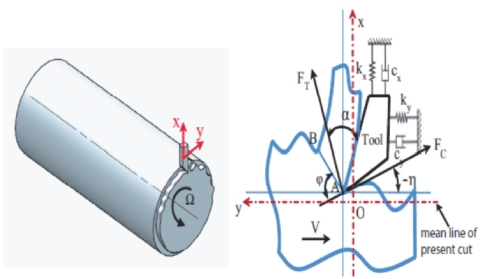TR2013-072
Targeted Energy Transfer for Suppressing Regenerative Instabilities in a 2-DOF Machine Tool Model
-
- , "Targeted Energy Transfer for Suppressing Regenerative Instabilities in a 2-DOF Machine Tool Model", ASME International Design Engineering Technical conferences & Computers and Information in Engineering Conference (IDETC/CIE), August 2013.BibTeX TR2013-072 PDF
- @inproceedings{Nankali2013aug,
- author = {Nankali, A. and Kalmar-Nagy, T. and Lee, Y.S.},
- title = {Targeted Energy Transfer for Suppressing Regenerative Instabilities in a 2-DOF Machine Tool Model},
- booktitle = {ASME International Design Engineering Technical conferences \& Computers and Information in Engineering Conference (IDETC/CIE)},
- year = 2013,
- month = aug,
- url = {https://www.merl.com/publications/TR2013-072}
- }
- , "Targeted Energy Transfer for Suppressing Regenerative Instabilities in a 2-DOF Machine Tool Model", ASME International Design Engineering Technical conferences & Computers and Information in Engineering Conference (IDETC/CIE), August 2013.
-
Research Area:

Abstract:
We study targeted energy transfer (TET) mechanisms by applying a nonlinear energy sink (NES) to suppress regenerative instabilities in a 2-DOF planar machine tool model. With the help of a numerical continuation tool, DDEBIFTOOL, we show that the tool instability is generated through a subcritical Hopf bifurcation in this simplified tool model. Studying modal energy exchanges reveals that only one of the DOFs is predominant, which may lead to the standard single-DOF machine tool model. Then, we apply an ungrounded NES to the 2-DOF tool model such that the NES interacts only with the dominant mode, which turns out to be more efficient than applying the NES to the other insignificant mode. Simple numerical simulations and bifurcation analysis demonstrate that the three typical TET mechanisms can be identified - That is, recurrent burst outs and suppression, and partial and complete suppression of tool instability.